Abstract
An enzyme-linked immunosorbent assay (ELISA) for circulating IgG mouse antibody to Plasmodium falciparum circumsporozoite (CS) protein was modified for use with human sera collected in an area of northern Zambia that was endemic for malaria and from individuals never exposed to malaria. Optimum sensitivity was achieved using Immulon 2 microtitration plates, boiled casein-Tween 20 blocking buffer, and by adding a solution of boiled casein (4 micrograms/ml) to the capture antigen diluent. The results for the detection of anti-CS IgG correlated well with those of sporozoite immunofluorescence antibody assays. Modification of the ELISA method permitted the simultaneous detection of anti-CS IgG and IgM antibody on a single serum sample in the same well of the microtitration plate and the detection of anti-CS IgG antibody in Kenyan dried whole-blood samples collected on filter-paper. The assay has been used to monitor human antibody levels in a phase-I malaria vaccine trial and in longitudinal studies of malaria transmission in Thailand and Kenya.
Full text
PDF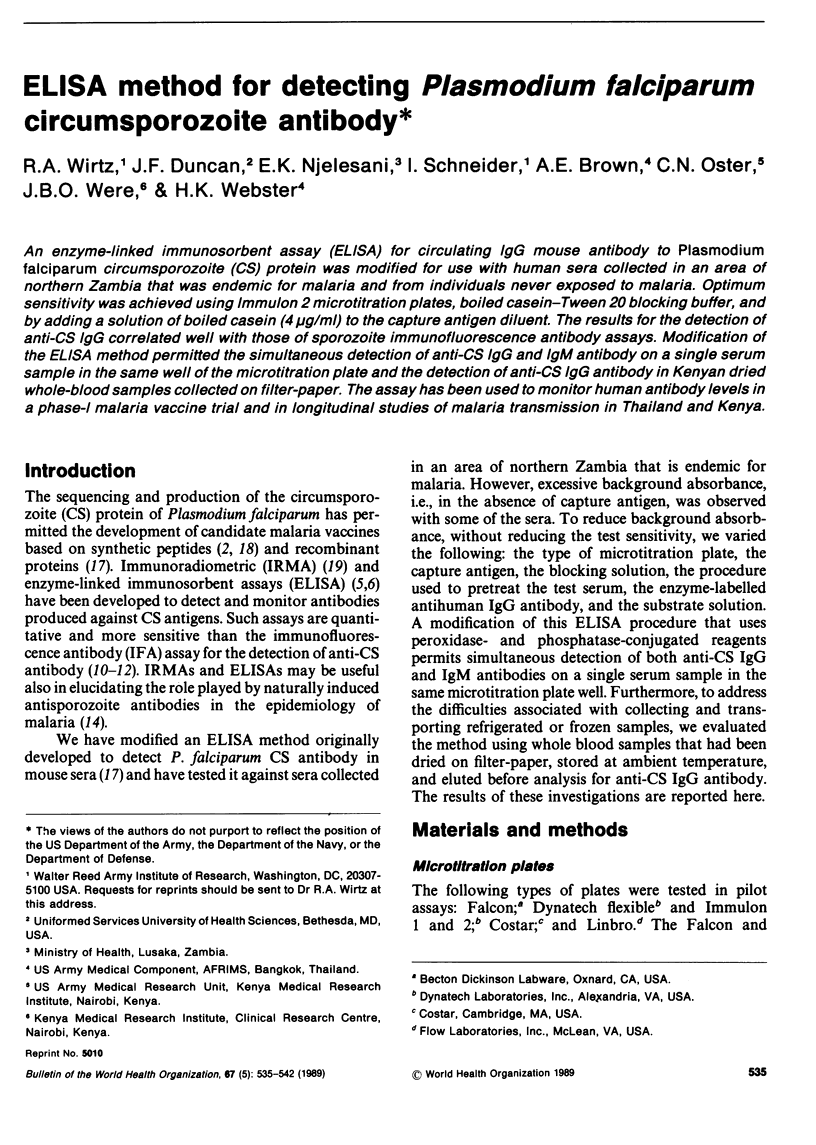

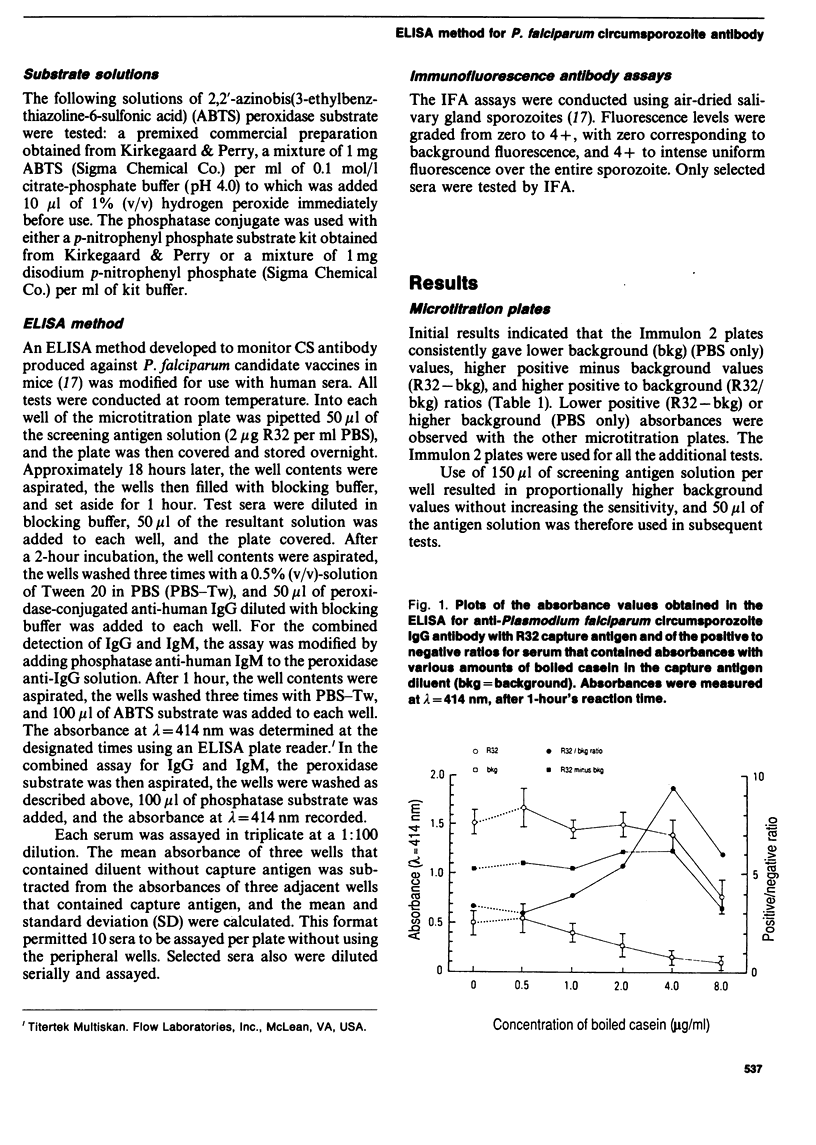
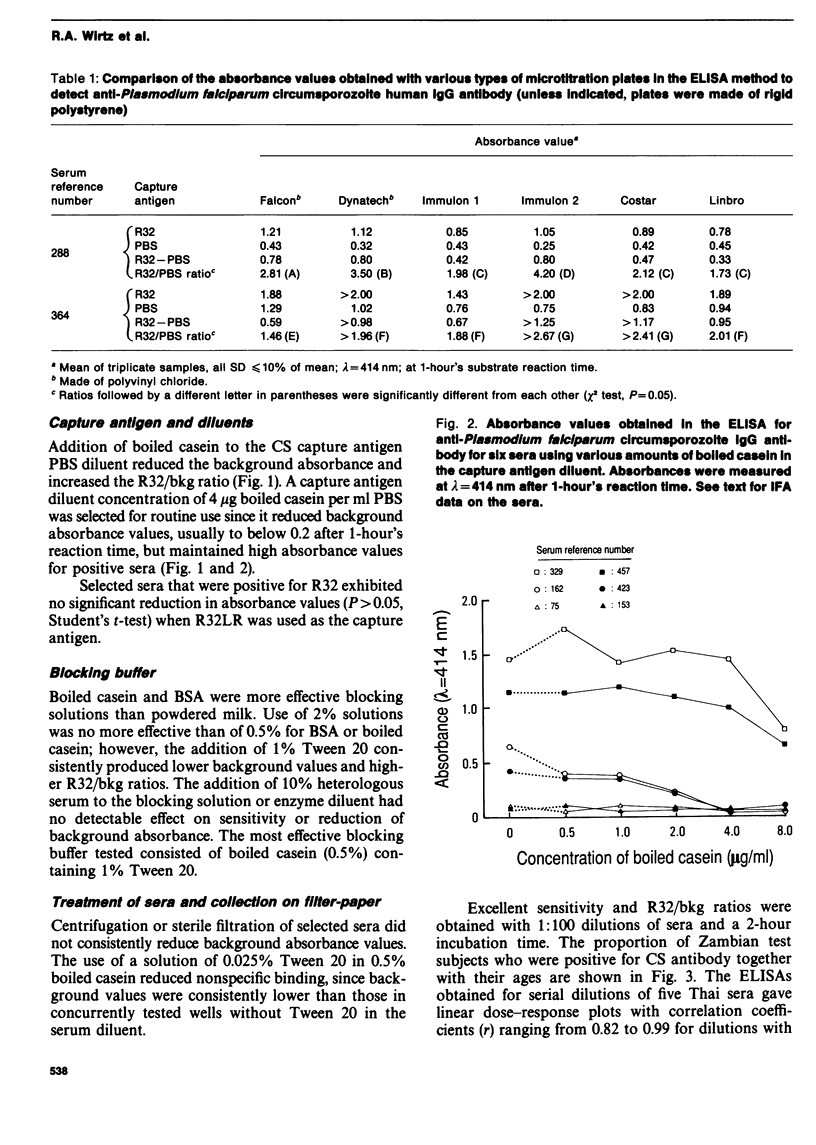
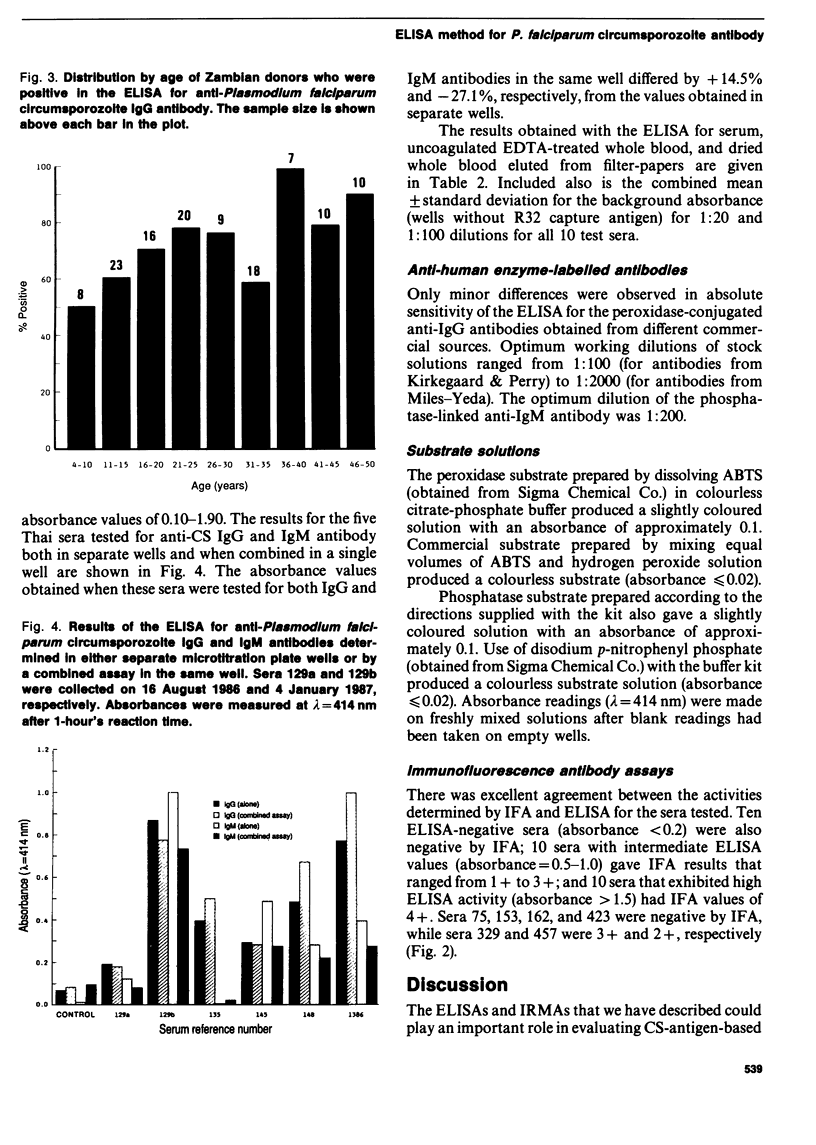
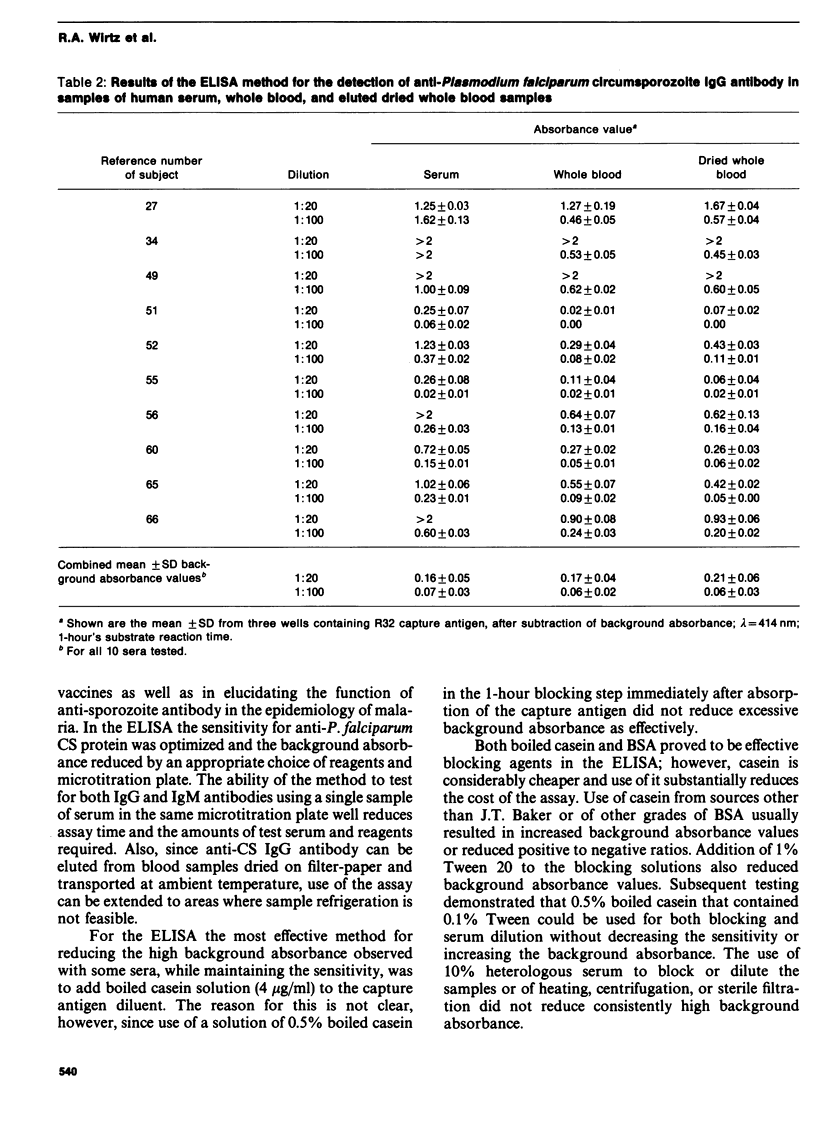
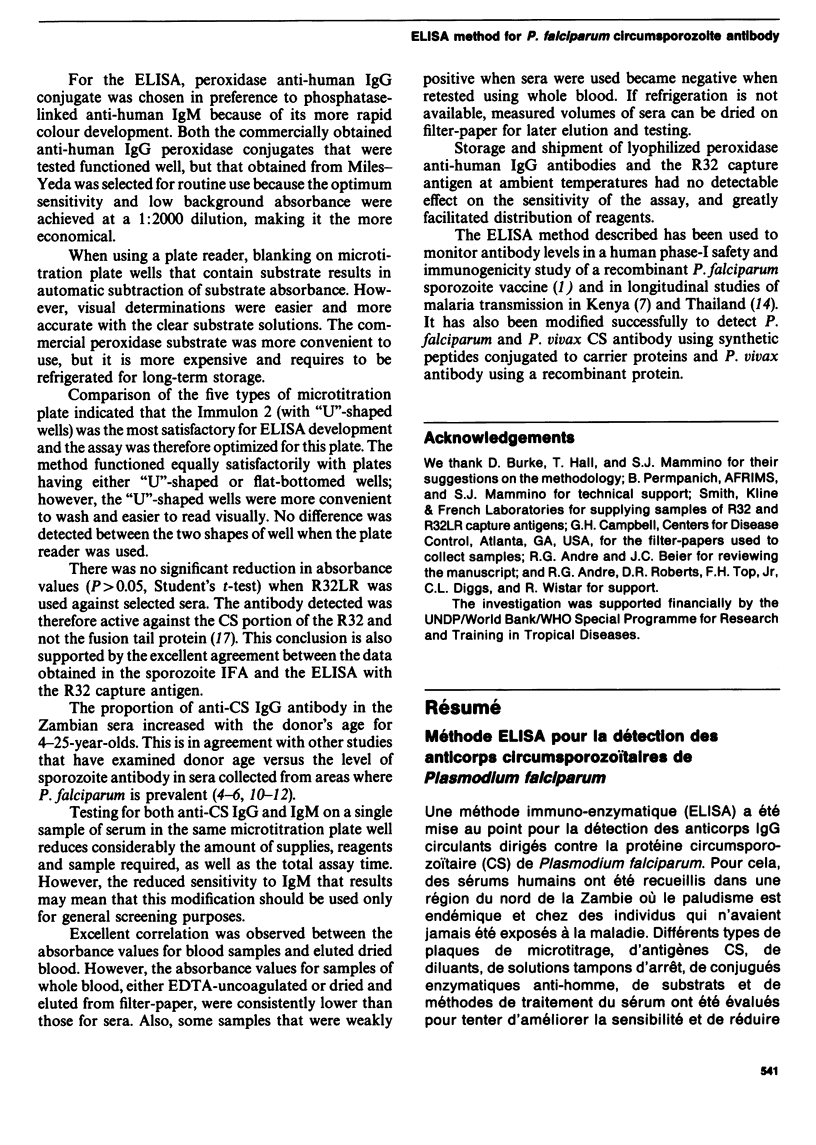
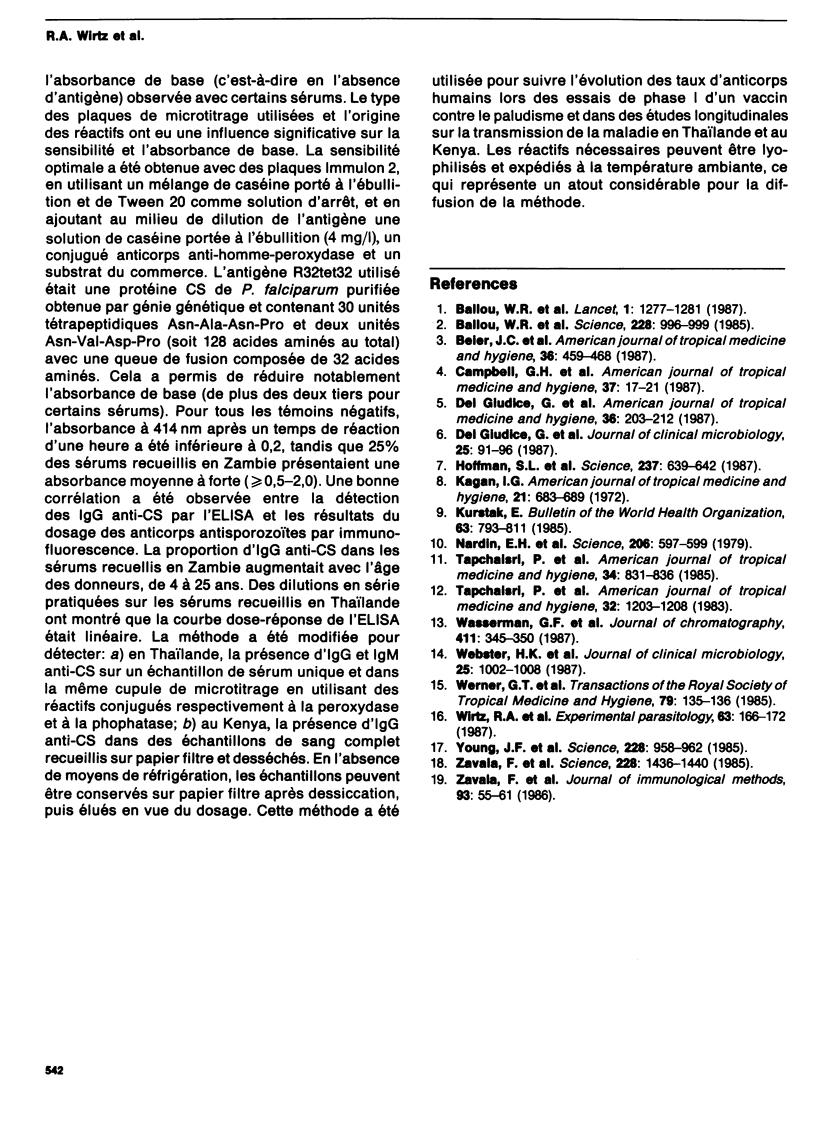
Selected References
These references are in PubMed. This may not be the complete list of references from this article.
- Ballou W. R., Rothbard J., Wirtz R. A., Gordon D. M., Williams J. S., Gore R. W., Schneider I., Hollingdale M. R., Beaudoin R. L., Maloy W. L. Immunogenicity of synthetic peptides from circumsporozoite protein of Plasmodium falciparum. Science. 1985 May 24;228(4702):996–999. doi: 10.1126/science.2988126. [DOI] [PubMed] [Google Scholar]
- Folena-Wasserman G., Inacker R., Rosenbloom J. Assay, purification and characterization of a recombinant malaria circumsporozoite fusion protein by high-performance liquid chromatography. J Chromatogr. 1987 Dec 18;411:345–354. doi: 10.1016/s0021-9673(00)93985-2. [DOI] [PubMed] [Google Scholar]
- Hoffman S. L., Oster C. N., Plowe C. V., Woollett G. R., Beier J. C., Chulay J. D., Wirtz R. A., Hollingdale M. R., Mugambi M. Naturally acquired antibodies to sporozoites do not prevent malaria: vaccine development implications. Science. 1987 Aug 7;237(4815):639–642. doi: 10.1126/science.3299709. [DOI] [PubMed] [Google Scholar]
- Nardin E. H., Nussenzweig R. S., McGregor I. A., Bryan J. H. Antibodies to sporozoites: their frequent occurrence in individuals living in an area of hyperendemic malaria. Science. 1979 Nov 2;206(4418):597–599. doi: 10.1126/science.386511. [DOI] [PubMed] [Google Scholar]
- Zavala F., Tam J. P., Hollingdale M. R., Cochrane A. H., Quakyi I., Nussenzweig R. S., Nussenzweig V. Rationale for development of a synthetic vaccine against Plasmodium falciparum malaria. Science. 1985 Jun 21;228(4706):1436–1440. doi: 10.1126/science.2409595. [DOI] [PubMed] [Google Scholar]
- Zavala F., Tam J. P., Masuda A. Synthetic peptides as antigens for the detection of humoral immunity to Plasmodium falciparum sporozoites. J Immunol Methods. 1986 Oct 23;93(1):55–61. doi: 10.1016/0022-1759(86)90432-1. [DOI] [PubMed] [Google Scholar]


